Hundreds of researchers in a collaborative project called “It from Qubit” say space and time may spring up from the quantum entanglement of tiny bits of information.


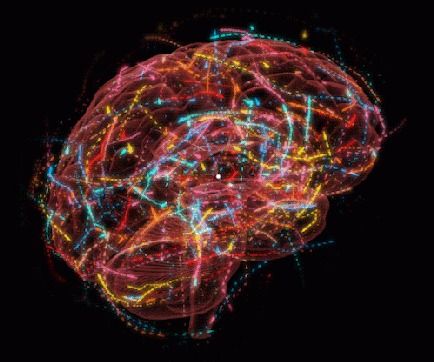
A new approach to a once-farfetched theory is making it plausible that the brain functions like a quantum computer.
The mere mention of “quantum consciousness” makes most physicists cringe, as the phrase seems to evoke the vague, insipid musings of a New Age guru. But if a new hypothesis proves to be correct, quantum effects might indeed play some role in human cognition. Matthew Fisher, a physicist at the University of California, Santa Barbara, raised eyebrows late last year when he published a paper in Annals of Physics proposing that the nuclear spins of phosphorus atoms could serve as rudimentary “qubits” in the brain—which would essentially enable the brain to function like a quantum computer.

Congrats geordie rose and jeremy hilton ; d-wave ROCKS!
News posting on T-Net)
Burnaby, BC, November 4, 2016—(T-Net)—D-Wave Systems Inc., the world’s first quantum computing company, announced the promotion of Jeremy Hilton to senior vice president, systems, with responsibility for driving the company’s quantum processor and systems research and engineering functions.
Hilton, who was previously the vice president of processor development, joined D-Wave in 2000, and has been instrumental in developing the world’s first scalable quantum processors. Hilton also led the development of D-Wave’s superconducting integrated circuit foundry. He is a named inventor on 34 granted U.S. patents.
“Jeremy has almost two decades of experience developing the most advanced scalable quantum computing systems in the world. We’re lucky to have him on the team,” said CEO Vern Brownell.

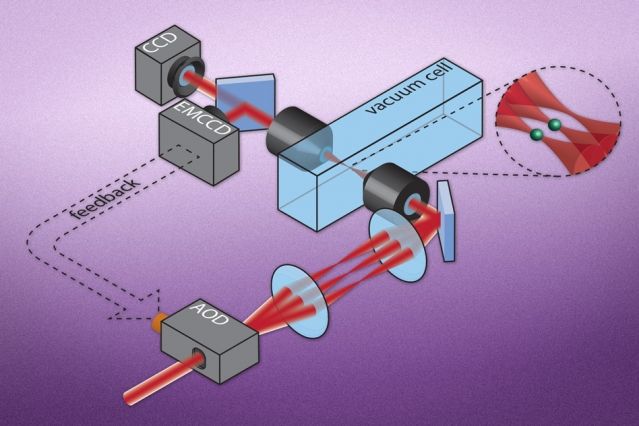
Atoms, photons, and other quantum particles are often capricious and finicky by nature; very rarely at a standstill, they often collide with others of their kind. But if such particles can be individually corralled and controlled in large numbers, they may be harnessed as quantum bits, or qubits — tiny units of information whose state or orientation can be used to carry out calculations at rates significantly faster than today’s semiconductor-based computer chips.
In recent years, scientists have come up with ways to isolate and manipulate individual quantum particles. But such techniques have been difficult to scale up, and the lack of a reliable way to manipulate large numbers of atoms remains a significant roadblock toward quantum computing.
Now, scientists from Harvard and MIT have found a way around this challenge. In a paper published in the journal Science, the researchers report on a new method that enables them to use lasers as optical “tweezers” to pick individual atoms out from a cloud and hold them in place. As the atoms are “trapped,” the scientists use a camera to create images of the atoms and their locations. Based on these images, they then manipulate the angle of the laser beams, to move individual atoms into any number of different configurations.

All right, who’s up for sum geeky stuff? Well if yes, you’ve just landed on the right corner of the WorldVillage. This is video about what might the quantum mechanics looks like.
This smart dude here uses some silicone droplets and hopefully this might help us unlock some of the questions about one of the biggest question marks in Physics- Quantum Mechanics. Enjoy!
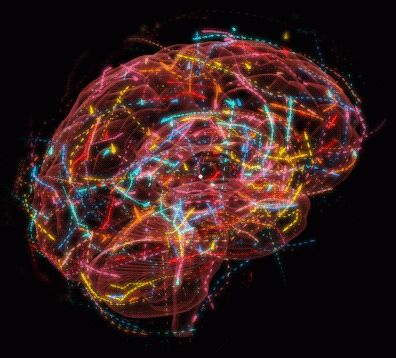
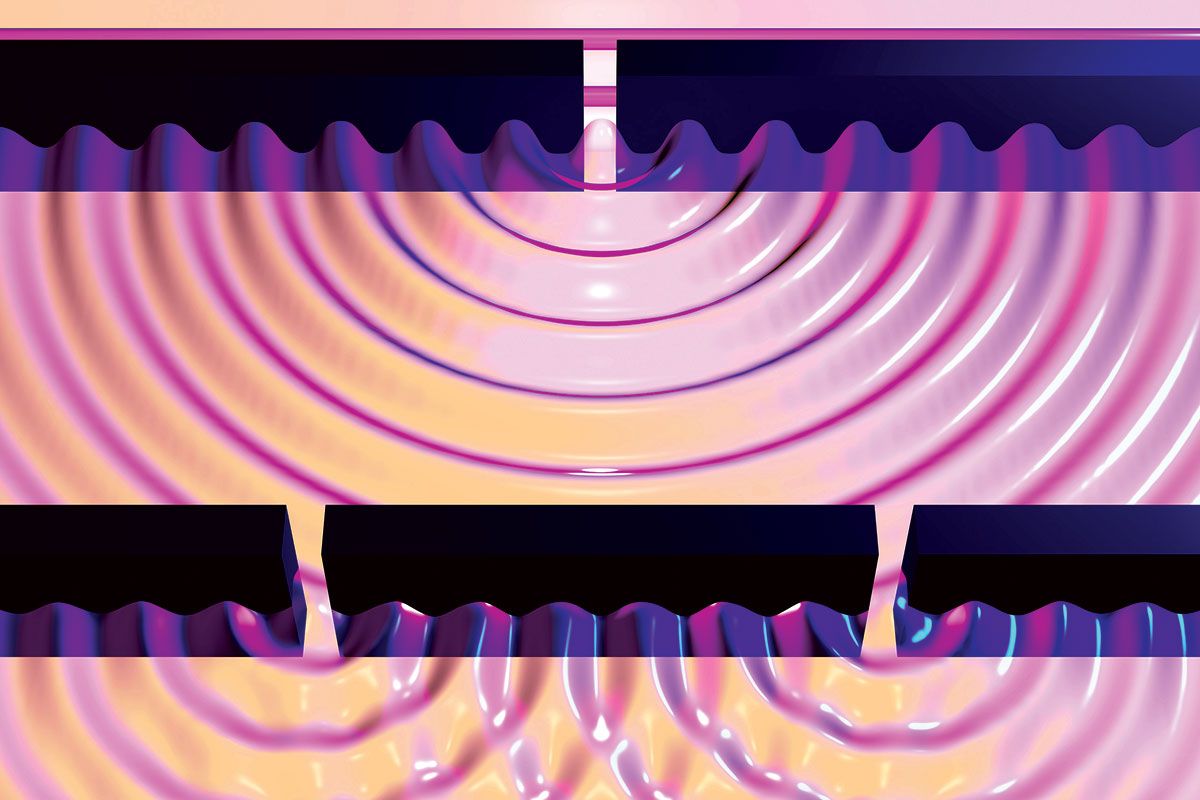
By Anil Ananthaswamy
AN ICONIC physics experiment may be hiding more than we ever realised about the nature of reality. The classic “double-slit” experiment reveals the strange duality of the quantum world, but it may behave more strangely than we thought – and could challenge one of the most closely held assumptions of quantum mechanics.
Revisiting it could help unify quantum mechanics with the other pillar of theoretical physics – Einstein’s general relativity – a challenge that has so far proven intractable.
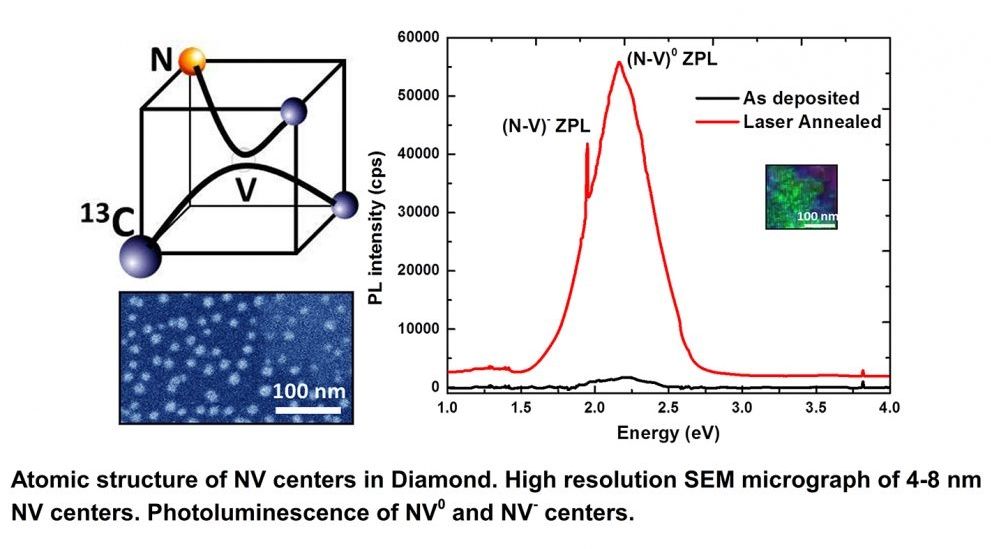
Researchers at North Carolina State University have developed a new technique for creating NV-doped single-crystal nanodiamonds, only four to eight nanometers wide, which could serve as components in room-temperature quantum computing technologies. These doped nanodiamonds also hold promise for use in single-photon sensors and nontoxic, fluorescent biomarkers.
Currently, computers use binary logic, in which each binary unit — or bit — is in one of two states: 1 or 0. Quantum computing makes use of superposition and entanglement, allowing the creation of quantum bits — or qubits — which can have a vast number of possible states. Quantum computing has the potential to significantly increase computing power and speed.
A number of options have been explored for creating quantum computing systems, including the use of diamonds that have “nitrogen-vacancy” centers. That’s where this research comes in.
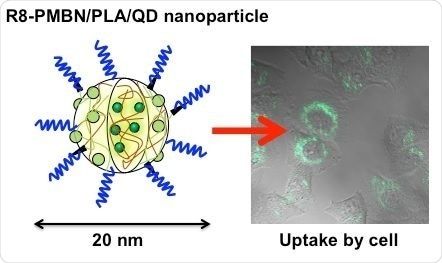
Nanoparticles are particles that are smaller than 100 nanometers. They are typically obtained from metals and, because of their tiny size, have unique properties that make them useful for biomedical applications. However, without treatment to make their surfaces biologically inert, their effectiveness is severely limited. Researchers led by Kazuhiko Ishihara at the University of Tokyo have pioneered the use of MPC polymers to modify the surfaces of nanoparticles. In a recent article published in the journal Science and Technology of Advanced Materials, they reviewed current ways in which polymeric nanoparticles can be used to transport a type of small nanoparticles called quantum dots into cells.
Cells can uptake polymer nanoparticles embedding quantum dots covered with cytocompatible phospholipid polymer and cell-penetrating peptides. © 2016 Kazuhiko Ishihara, Weixin Chen, Yihua Liu, Yuriko Tsukamoto and Yuuki Inoue.
MPC polymers are large molecules made from chains of 2-methacryloyloxyethyl phosphorylcholine (MPC). Bioactive nanoparticles whose surfaces have been modified with them can be used as anti-tumor compounds, gene carriers, contrast agents that improve MRI images, and protein detectors. MPC polymers mimic cellular membranes and allow the delivery of bioactive molecules that are normally not very soluble in water or that might produce unwanted biological side effects. When scientists attach MPC polymers to the surface of inorganic nanoparticles, they can make substances that are easily delivered into the blood or other tissue.